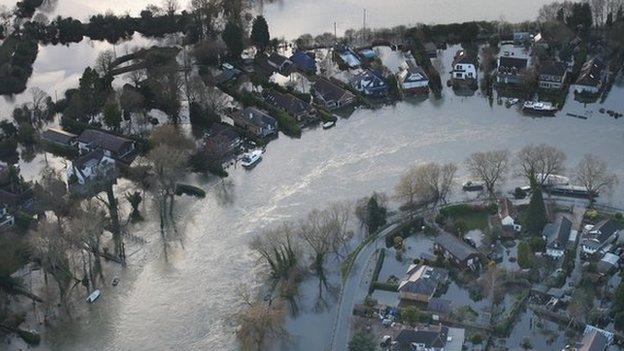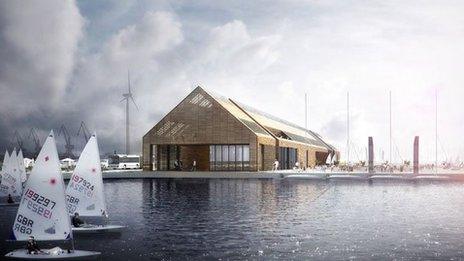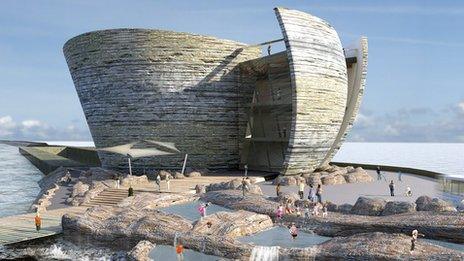Swansea Bay tidal lagoon given UK government boost
- Published
TLP has said the turbines in Swansea Bay could power 155,000 homes
A £1bn plan to build the world's first power-generating tidal lagoon in Swansea Bay has been given a boost as the UK government revealed further discussions with the developers.
It has been named in the National Infrastructure Plan, external published ahead of the chancellor's Autumn Statement.
Energy Secretary Ed Davey said it showed the UK government was "serious" about the potential for tidal power.
The go-ahead could be given before the general election in May.
'Massive boost'
"Tidal energy is a huge opportunity for Britain," said Mr Davey.
"Tidal lagoons alone could provide up to 8% of our power needs, replacing foreign fossil fuels with clean, reliable home-grown electricity.
"That's why we're showing investors and developers that we're serious about tidal lagoon potential and have started in-depth discussions for what could become the world's first tidal lagoon."

A six-mile long seawall would house underwater turbines
Welsh Secretary Stephen Crabb welcomed progress on the scheme, saying it could give a "massive boost" to the Welsh economy, creating thousands of jobs.
"Wales is already home to some of the most cutting edge companies in the world and the country is uniquely placed to pioneer tidal power," he said.
"I am a strong supporter of this project and I have long been making the case to my Cabinet colleagues that Welsh innovation should be supporting the next generation of low-carbon technology."

Watch Tidal Lagoon Power's video of how the turbines would work
HOW THE LAGOON WOULD WORK:
A six-mile long seawall loops two miles out to sea from close to the mouth of the River Tawe and Swansea Docks and make landfall close to Swansea University's new Fabian Way campus to the east
It would house 16 underwater turbines generating electricity on both the rising and falling tide
Enough renewable power would be produced for 155,000 homes (equivalent to 90% of Swansea Bay's annual domestic electricity use) for 120 years.
Source: Tidal Lagoon Power Ltd

Six months of public consultation closes on Tuesday with the Planning Inspectorate, external due to report its recommendations in three months' time.
It will also depend on ministers agreeing a guaranteed price for the power generated by the lagoon.
"This is Wales leading the world," says project chief executive Mark Shorrock
TLP has said the turbines could power 155,000 homes and offer coastal flood protection for the Swansea Bay area.
Construction would create or support 1,900 jobs with 180 people employed once the lagoon is operational.
However, some organisations have expressed concern for its impact on wildlife but TLP chief executive Mark Shorrock said the project will work with the "rhythm of nature".
He said the project has attracted interest from India and France and could be worth billions to the Welsh economy if a supply chain for parts could be created for other projects.
"This is massive - this is Wales leading the world," he said.

Analysis by Iolo ap Dafydd, BBC Wales environment correspondent

Tidal Lagoon Power Limited hopes to build the world's first tidal lagoon project in Swansea Bay.
The company says it could power more than 150,000 homes.
After public hearings in the Swansea area, the company is hoping the planning authorities will recommend that Energy Secretary Ed Davey gives the green light.
The crucial part of negotiations though will be for the UK government to agree paying a subsidy, or guaranteed price, for the electricity generated.
That could be between £155 and £162 per megawatt hour.
Ministers will have to assess if the project is affordable and offers value for money.
- Published2 December 2014

- Published22 November 2014

- Published20 October 2014

- Published2 December 2014
- Published7 February 2014

- Published24 October 2012
